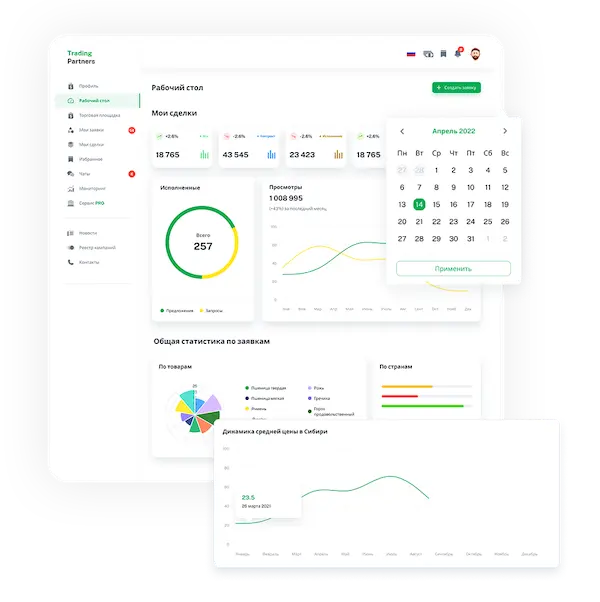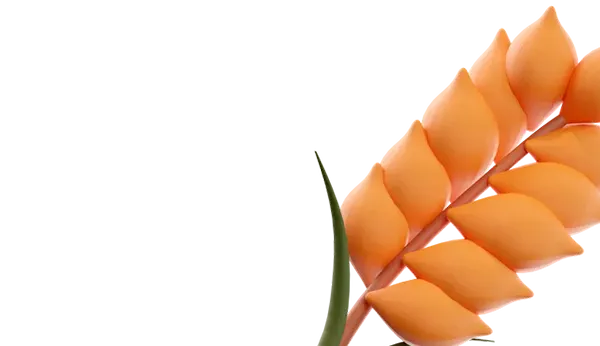It is reported that the number of emergencies affecting agricultural crops is increasing. In 2024, the number of such incidents increased by 1.6 times compared to 2023 and reached 29 in 26 regions of Russia. This information was announced by Korney Bizhdov, the President of the National Union of agricultural insurers (NSA).
In 2023, a state of emergency was declared 18 times in 16 regions due to climate anomalies. Over the past 7 years, the frequency of climate anomalies threatening agricultural production has increased fourfold. Bizhdov believes this is a stable trend.
In 2024, Russia experienced 5 major climate-related emergencies that caused damage to Russian farmers. First, frosts occurred in 11 regions affecting the Central Chernozem Zone, the South of Russia, and the Volga Region. Drought followed the frosts, affecting crops in several regions. Climatic anomalies affected spring sowing in the country. Then, the Primorsky Krai was threatened by floods in July, and the Volga Region and Western Siberia faced soil overmoistening in August. In October, drought affected the Voronezh and Oryol regions, as well as Ingushetia. In some regions of the country, emergencies were declared multiple times during the agricultural season.
According to the NSA, insurers paid out 1.3 billion rubles under crop insurance programs by the beginning of October 2024. The total amount of payments under state-supported crop protection programs amounted to 3.1 billion rubles. In 2023, insurers paid out 5 billion rubles.
One of the representatives of the Ministry of Emergency Situations, Dmitry Moon, pointed out that climate change is irreversible. He gave the example of June rains when a month's worth of precipitation fell in half an hour, which is linked to global warming. Moon also noted the increasing conflict in air temperatures leading to tropical downpours.
It is important to note that some regions suffer from overmoistening while others suffer from drought, and there is no redistribution of resources.
The Voronezh region, known for its stable agricultural development, faced drought after no rainfall since August. Instead, tornadoes started occurring, which were recorded in the Midwest and on the North American continent.
Bizhdov emphasizes that the increase in climate-related emergencies is becoming a problem not only for Russian farmers but for the whole world. The nature of risks is changing.
He noted that the law on insuring farmers with state support against climate risks started working in time. Demand for subsidized agricultural insurance in Russia is growing. So far, agricultural insurers are successfully coping with their tasks.
According to the NSA, by September 2024, the insured area reached 9.5 million hectares across all insurance programs, compared to 6.7 million hectares for the same period last year. The area insured under emergency programs reached 4.7 million hectares by September of this year, covering 53 regions. The number of contracts increased by 83% compared to the previous year.
In the first half of 2024, payments by Russian agricultural insurers across all business lines amounted to almost 2.9 billion rubles, which is three times more than the previous year. Payments under state-supported insurance reached 2.2 billion rubles, increasing by 3.3 times, and for insurance without state support - 655.3 million rubles, an increase of almost 4 times.
The share of payments is 51.2% compared to 16.2% the previous year.
According to the federal law "On State Support in the Sphere of Agricultural Insurance" (N260-F3), state support is provided in Russia within a centralized system for insuring risks in agriculture.
Insurance contracts with state support are concluded by insurance companies that are members of the National Union of agricultural insurers. Insurance is carried out based on unified standard rules for each agricultural insurance program.
The country's strategic goal regarding agricultural insurance is to ensure insurance coverage of at least 30% of sown areas by 2030.

 Trading platform
Trading platform 
 Monitoring
Monitoring  Express applications
Express applications 
 Fork Work
Fork Work 
 Service
Service  News
News  Directory
Directory 













